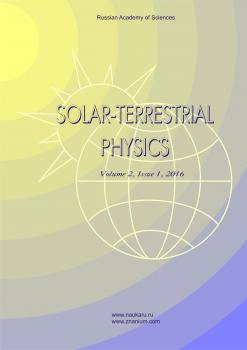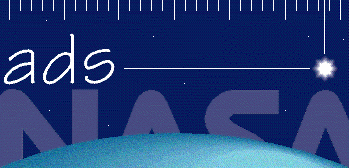Фрязино, Россия
Фрязино, Россия
Internal gravity waves (IGW) significantly affect the structure and circulation of Earth’s atmosphere by transporting wave energy and momentum upward from the lower atmosphere. Since IGW can propagate freely through a stably stratified atmosphere, similar effects may occur in the atmospheres of Mars and Venus. Observations of temperature and wind speed fluctuations induced by internal waves in Earth’s atmosphere have shown that wave amplitudes increase with height, but not quickly enough to correspond to the amplitude increase due to an exponential decrease in the density without energy dissipation. The linear theory of IGW explains the wave amplitude growth rate as follows: any wave amplitude exceeding the threshold value leads to instability and produces turbulence, which hinders further amplitude growth (internal wave saturation). The mechanisms that contribute most to the energy dissipation and saturation of IGW in the atmosphere are thought to be the dynamical (shear) and convective instabilities. The assumption of internal wave saturation plays a key role in radio occultation monitoring of IGW in planetary atmospheres. A radiosonde study of wave saturation processes in Earth’s atmosphere is therefore actual and important task. We report the results of determination of actual and threshold amplitudes, saturation degree, and other characteristics for the identified IGW in Earth’s atmosphere obtained from the analysis of SPARC (Stratospheric Processes And their Role in Climate) radiosonde measurements of wind speed and temperature [http://www.sparc.sunysb.edu/].
Earth’s atmosphere, internal gravity waves, saturation, radiosonde measurements, wind speed, temperature
1. Altieri F., Migliorini A., Zasova L., Shakun A., Piccioni G., Bellucci G. Modeling VIRTIS/VEX O2(a1 delta g) nightglow profiles affected by the propagation of gravity waves in the Venus upper mesosphere. J. Geophys. Res. 2014, vol. 119, pp. 2300-2316. DOI:https://doi.org/10.1002/2013JE004585.
2. Cot C., Barat J. Wave-turbulence interaction in the stratosphere: A case study. J. Geophys. Res. 1986, vol. 91, no. D2, pp. 2749-2756.
3. Creasey J.E., Forbes J.M., Hinson D.P. Global and seasonal distribution of gravity wave activity in Mars’ lower atmosphere derived from MGS radio occultation data. Geophys. Res. Let. 2006, vol. 33, L01803. DOI:https://doi.org/10.1029/2005GL024037.
4. Fritts D.C. A review of gravity wave saturation processes, effects, and variability in the middle atmosphere. Pure Appl. Geophys. 1989, vol. 130, pp. 343-371.
5. Fritts D.C., Alexander M.J. Gravity wave dynamics and effects in the middle atmosphere. Rev. Geophys. 2003, vol. 41, no. 1, pp. 1-59. DOI:https://doi.org/10.1029/2001RG000106.
6. Gavrilov N.M., Karpova N.V., Jacobi Ch., Gavrilov A.N. Morphology of atmospheric refraction index variations at different altitudes from GPS/MET satellite observations. J. Atmos. Sol.-Terr. Phys. 2004, vol. 66, no. 6-9, pp. 427-435.
7. Gavrilov N.M., Manuilova R.O. Long-term global distributions of mesoscale variations in atmospheric radio refraction obtained from the GPS Champ Satellite Data. Radiophysics and Quantum Electronics. 2016, vol. 59, no. 7, pp. 535-545. DOI:https://doi.org/10.1007/s11141-016-9721-7.
8. Gorbunov M.E., Gurvich A.S. Microlab-1 experiment: Multipath effects in the lower troposphere. J. Geophys. Res. 1998, vol.103, no. D12, pp. 13819-13826.
9. Gossard E.E, Hooke W.H. Waves in the atmosphere. Elsevier Scientific Publishing Co., Amsterdam-Oxford-New York, 1975.
10. Gill A.E. Dinamika atmosfery i okeana [Atmosphere-Ocean Dynamics]. Moscow: Mir Publ., 1986, vol. 1. 397 p. (In Russian). English edition: Gill A.E. Atmosphere-Ocean Dynamics. New York, London, Paris: Academic Press, 1982.
11. Gubenko V.N., Andreev V.E., Pavelyev A.G. Detection of layering in the upper cloud layer of Venus northern polar atmosphere observed from radio occultation data. J. Geophys. Res. 2008a, vol. 113, E03001. DOI:https://doi.org/10.1029/2007JE002940.
12. Gubenko V.N., Pavelyev A.G., Andreev V.E. Determination of the intrinsic frequency and other wave parameters from a single vertical temperature or density profile measurement. J. Geophys. Res. 2008b, vol. 113, D08109. DOI:https://doi.org/10.1029/2007JD008920.
13. Gubenko V.N., Pavelyev A.G., Salimzyanov R.R., Pavelyev A.A. Reconstruction of internal gravity wave parameters from radio occultation retrievals of vertical temperature profiles in the Earth’s atmosphere. Atmos. Meas. Tech. 2011, vol. 4, no. 10, pp. 2153-2162. DOI:https://doi.org/10.5194/amt-4-2153-2011.
14. Gubenko V.N., Pavelyev A.G., Salimzyanov R.R., Andreev V.E. A method for determination of internal gravity wave parameters from a vertical temperature or density profile measurement in the Earth’s atmosphere. Cosmic Res. 2012, vol. 50, no. 1, pp. 21-31. DOI:https://doi.org/10.1134/S0010952512010029.
15. Gubenko V.N., Kirillovich I.A., Pavelyev A.G. Characteristics of internal waves in the Martian atmosphere obtained on the basis of an analysis of vertical temperature profiles of the Mars Global Surveyor mission. Cosmic Res. 2015, vol. 53, no. 2, pp. 133-142. DOI:https://doi.org/10.1134/S0010952515020021.
16. Gubenko V.N., Kirillovich I.A. Pavelyev A.G., Andreev V.E. Detection of saturated internal gravity waves and reconstruction of their characteristics in the Martian atmosphere. Izvestiya vysshikh uchebnykh zavedenii. Fizika [Russian Physics Journal]. 2016a, vol. 59, no. 12-2, pp. 46-49. (In Russian).
17. Gubenko V.N., Kirillovich I.A., Liou Y.-A., Pavelyev A.G. Monitoring of internal gravity waves in the Arctic and Antarctic atmosphere. Izvestiya vysshikh uchebnykh zavedenii. Fizika [Russian Physics Journal]. 2016b, vol. 59, no. 12-3, pp. 80-85. (In Russian).
18. Gubenko V.N., Pavelyev A.G., Andreev V.E., Kirillovich I.A., Salimzyanov R.R. Radio occultation investigations of internal waves and layered structures in atmospheres of the Earth, Mars and Venus. Sovremennye Dostizheniya v Plazmennoi Geliogeofizike [Modern Achievements in Plasma Heliogeophysics]. 2016c. Moscow: IKI RAN Publ., 2016c. pp. 548-554. (In Russian). URL: http://iki.cosmos.ru/ books/2016petrukovich-2.pdf (accessed 31 March 2018).
19. Gubenko V.N., Pavelyev A.G., Kirillovich I.A., Liou Y.-A. Case study of inclined sporadic E layers in the Earth’s ionosphere observed by CHAMP/GPS radio occultations: Coupling between the tilted plasma layers and internal waves. Adv. Space Res. 2018, vol. 61, iss. 7, pp. 1702-1716. DOI:https://doi.org/10.1016/j.asr.2017.10.001.
20. Hines C.O. Tropopausal mountain waves over Arecibo: A case study. J. Atmos. Sci. 1988, vol. 46, no. 4, pp. 476-488.
21. Horinouchi T., Tsuda T. Spatial structures and statistics of atmospheric gravity waves derived using a heuristic vertical cross section extraction from COSMIC GPS radio occultation data. J. Geophys. Res. 2009, vol. 114, D16110. DOI:https://doi.org/10.1029/2008JD011068.
22. Liou Y.A., Pavelyev A.G., Huang C.Y., Igarashi K., Hocke K., Yan S.K. Analytic method for observation of the gravity waves using radio occultation data. Geophys. Res. Let. 2003, vol. 30, no. 20. CiteID 2021. DOI:https://doi.org/10.1029/2003GL017818.
23. Liou Y.A., Pavelyev A.G., Wickert J., Huang C.Y., Yan S.K., Liu S.F. Response of GPS occultation signals to atmospheric gravity waves and retrieval of gravity wave parameters. GPS Solutions. 2004, vol. 8, no. 2, pp. 103-111.
24. Noersomadi N., Tsuda T. Comparison of three retrievals of COSMIC GPS radio occultation results in the tropical upper troposphere and lower stratosphere. Earth, Planets and Space. 2017, vol. 69:125. DOI:https://doi.org/10.1186/s40623-017-0710-7.
25. Pavelyev A.G., Liou Y.A., Wickert J., Gubenko V.N., Pavelyev A.A., Matyugov S.S. New Applications and Advances of the GPS Radio Occultation Technology as Recovered by Analysis of the FORMOSAT-3/COSMIC and CHAMP Data-Base. New Horizons in Occultation Research: Studies in Atmosphere and Climate. Springer-Verlag, Berlin, Heidelberg. 2009, pp. 165-178. DOI:https://doi.org/10.1007/978-3-642-00321_9.
26. Pavelyev A.G., Liou Y.A., Zhang K., Wang C.S., Wickert J., Schmidt T., Gubenko V.N., Pavelyev A.A., Kuleshov Y. Identification and localization of layers in the ionosphere using the eikonal and amplitude of radio occultation signals. Atmos. Meas. Tech. 2012, vol. 5, no. 1, pp. 1-16. DOI:https://doi.org/10.5194/amt-5-1-2012.
27. Pavelyev A.G., Liou Y.A., Matyugov S.S., Pavelyev A.A., Gubenko V.N., Zhang K., Kuleshov Y. Application of the locality principle to radio occultation studies of the Earth's atmosphere and ionosphere. Atmos. Meas. Tech. 2015, vol. 8, no. 7, pp. 2885-2899. DOI:https://doi.org/10.5194/amt-8-2885-2015.
28. Peralta J., Sanchez-Lavega A., Lopez-Valverde M.A., Luz D., Machado P. Venus’s major cloud feature as an equatorially trapped wave distorted by the wind. Geophys. Res. Let. 2015, vol. 42. DOI:https://doi.org/10.1002/2014GL062280.
29. Pfister L., Chan K.R., Bui T.P., Bowen S., Legg M., Gary B., Kelly K.; Proffitt M., Starr W. Gravity waves generated by a tropical cyclone during the STEP tropical field program: A case study. J. Geophys. Res. 1993, vol. 98, no. D5, pp. 8611-8638.
30. Rechou A., Kirkwood S., Arnault J., Dalin P. Short vertical-wavelength inertia gravity waves generated by a jet-front system at Arctic latitudes - VHF radar, radiosondes, and numerical modeling. Atmos. Chem. Phys. 2014, vol. 14, pp. 6785-6799. DOI:https://doi.org/10.5194/acp-14-6785-2014.
31. Sacha P., Foelsche U., Pisoft P. Analysis of internal gravity waves with GPS RO density profiles. Atmos. Meas. Tech. 2014, vol. 7, pp. 4123-4132. DOI:https://doi.org/10.5194/amt-7-4123-2014.
32. Steiner A.K., Kirchengast G. GW spectra from GPS/MET occultation observations. J. Atmos. Ocean. Tech. 2000, vol. 17, pp. 495-503.
33. Tsuda T., Hocke K. Vertical wave number spectrum of temperature fluctuations in the stratosphere using GPS occultation data. J. Meteorol. Soc. Jpn. 2002, vol. 80, no. 4B, pp. 1-13.
34. Tsuda T., Nishida M., Rocken C., Ware R.H. A global morphology of GW activity in the stratosphere revealed by the GPS occultation data (GPS/MET). J. Geophys. Res. 2000, vol. 105, no. D6, pp. 7257-7273.
35. Xiao C.Y., Hu X. Analysis on the global morphology of stratospheric gravity wave activity deduced from the COSMIC GPS occultation profiles. GPS Solutions. 2010, vol. 14, pp. 65-74. DOI:https://doi.org/10.1007/s10291-009-0146-z.
36. Zagar N., Jelic D., Blaauw M., Bechtold P. Energy spectra and inertia-gravity waves in global analyses. J. Atmos. Sci. 2017, vol. 74. no. 8, pp. 2447-2466. DOI:https://doi.org/10.1175/JAS-D-16-0341.1.
37. Zink F., Vincent R.A. Wavelet analysis of stratospheric gravity wave packets over Macquarie Island. 1. Wave parameters. J. Geophys. Res. 2001, vol. 106, no. D10, pp. 10275-10288.

















